Common Hackberry
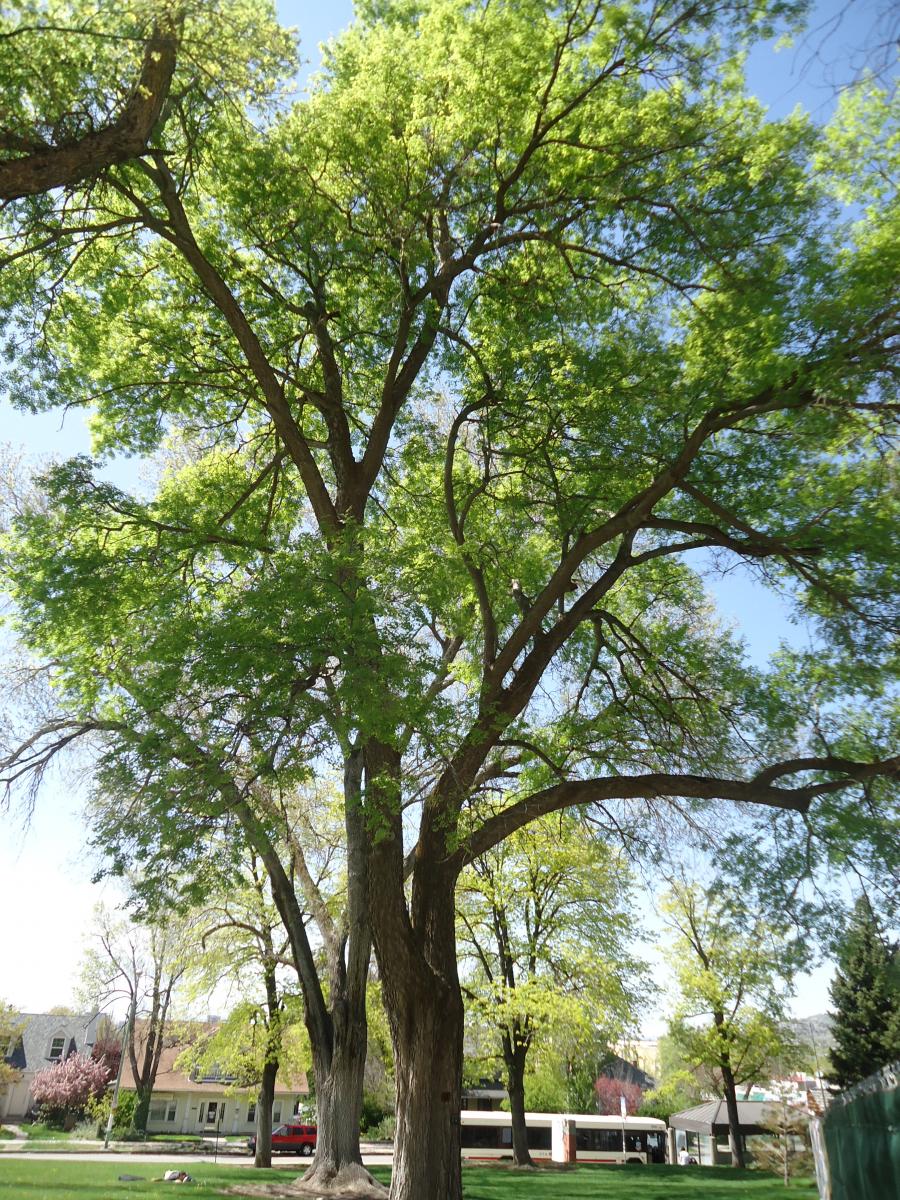
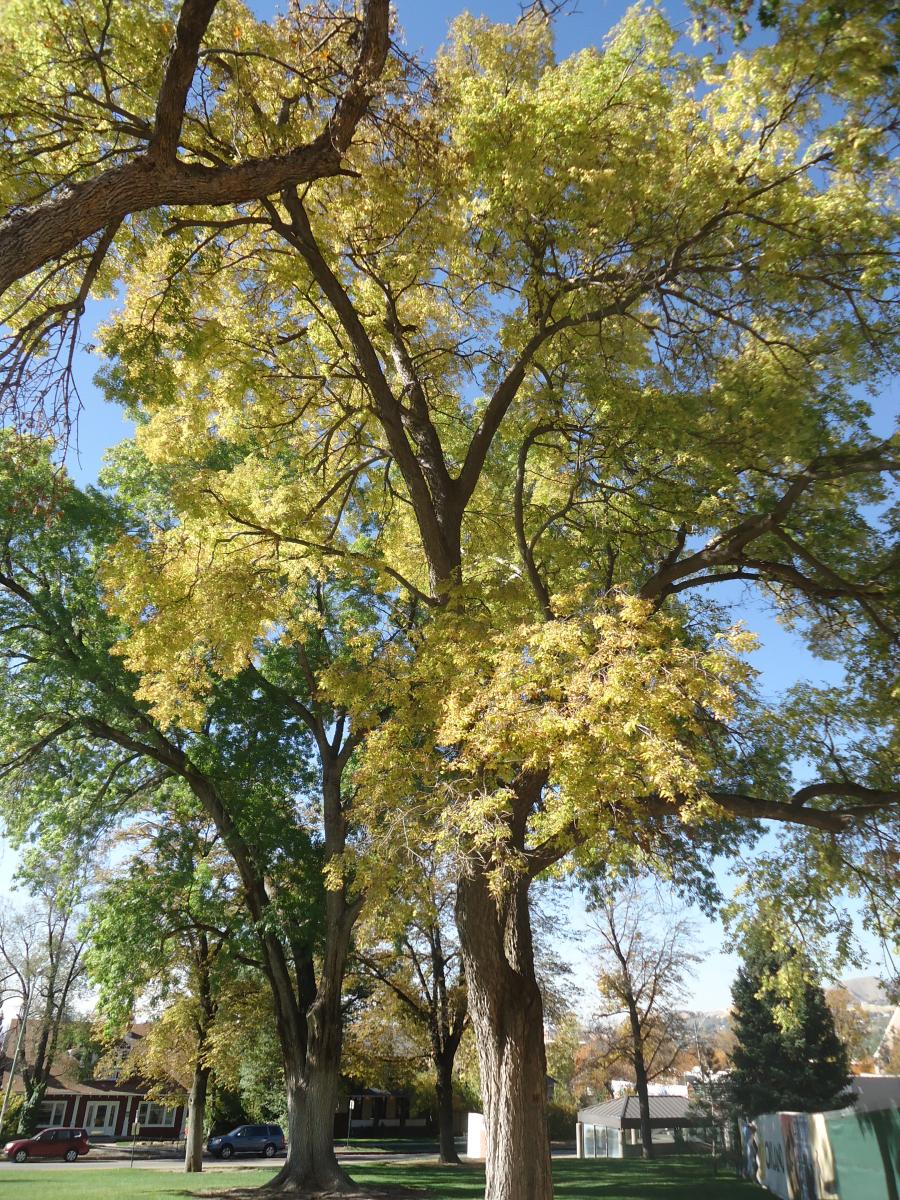


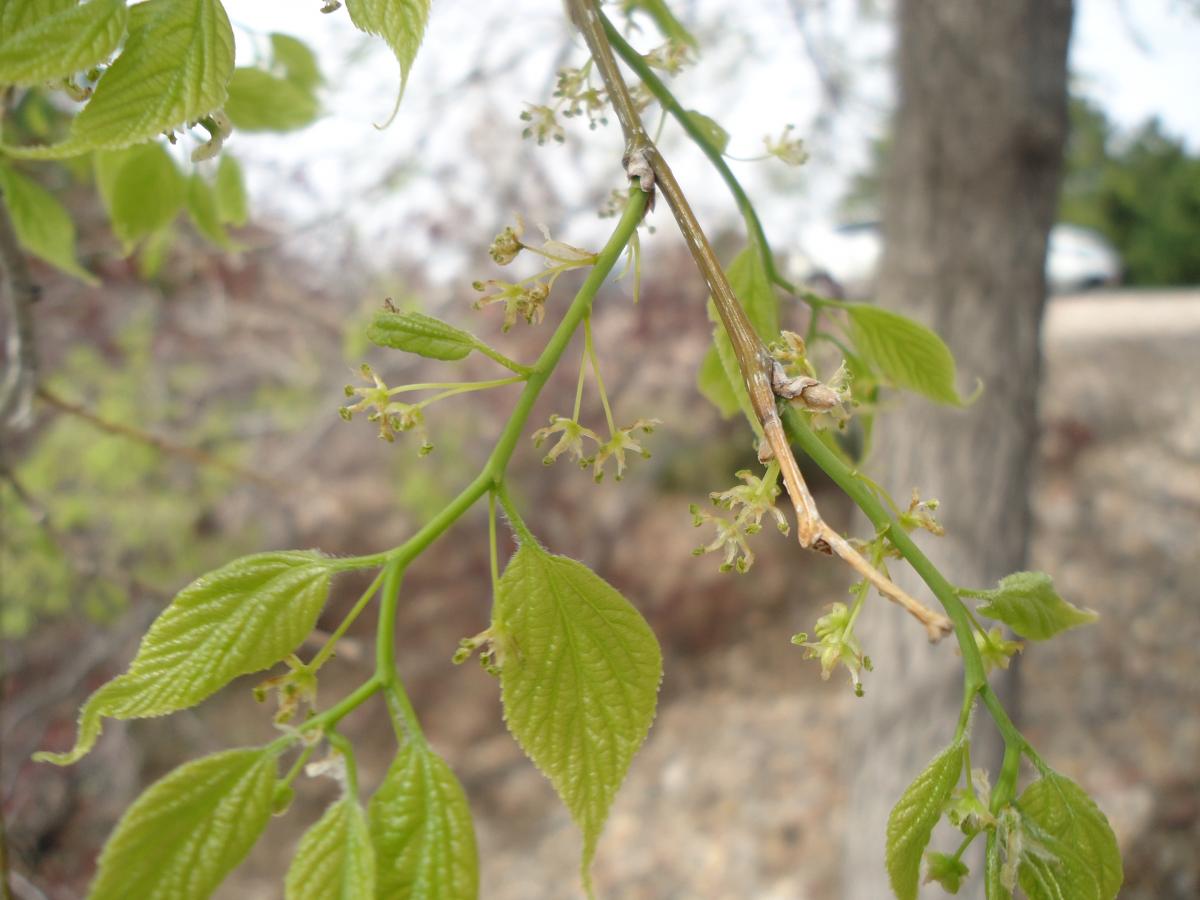
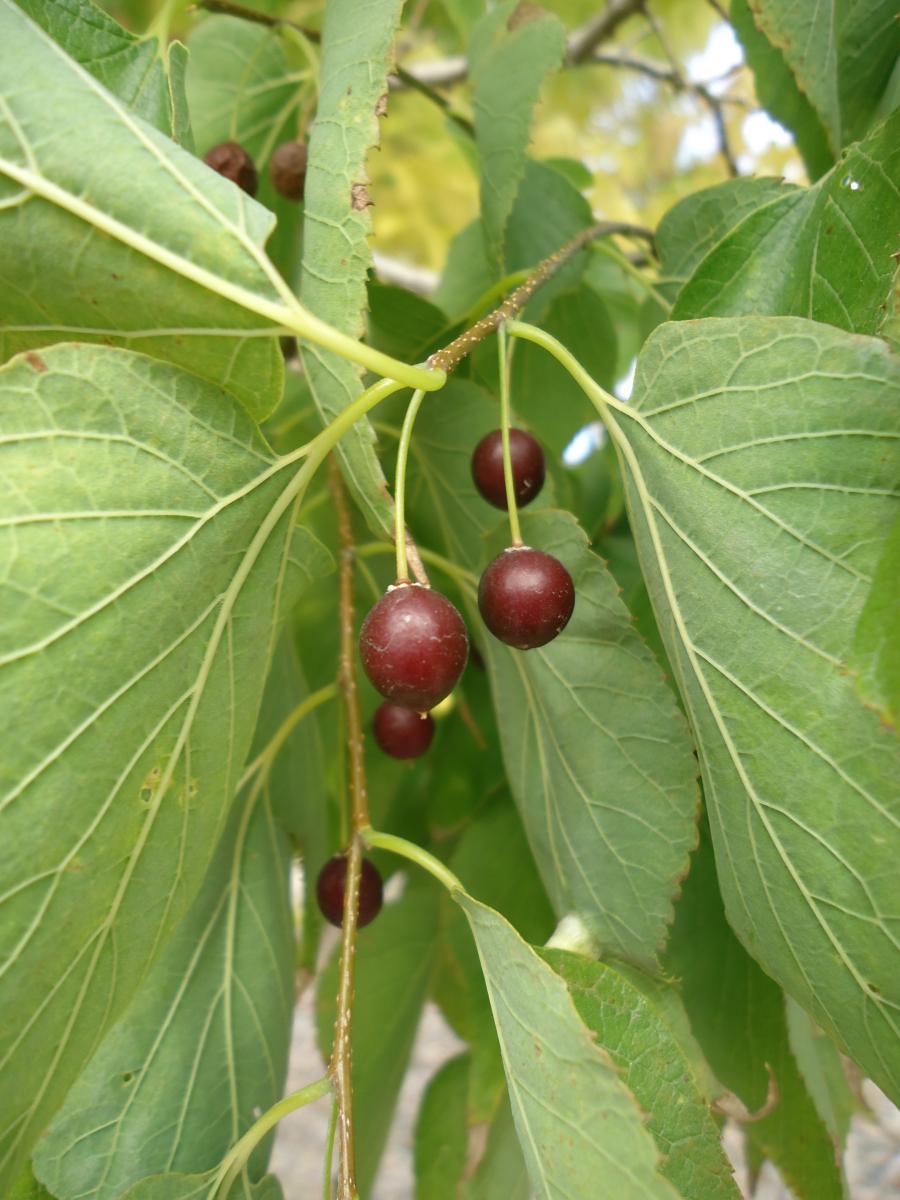
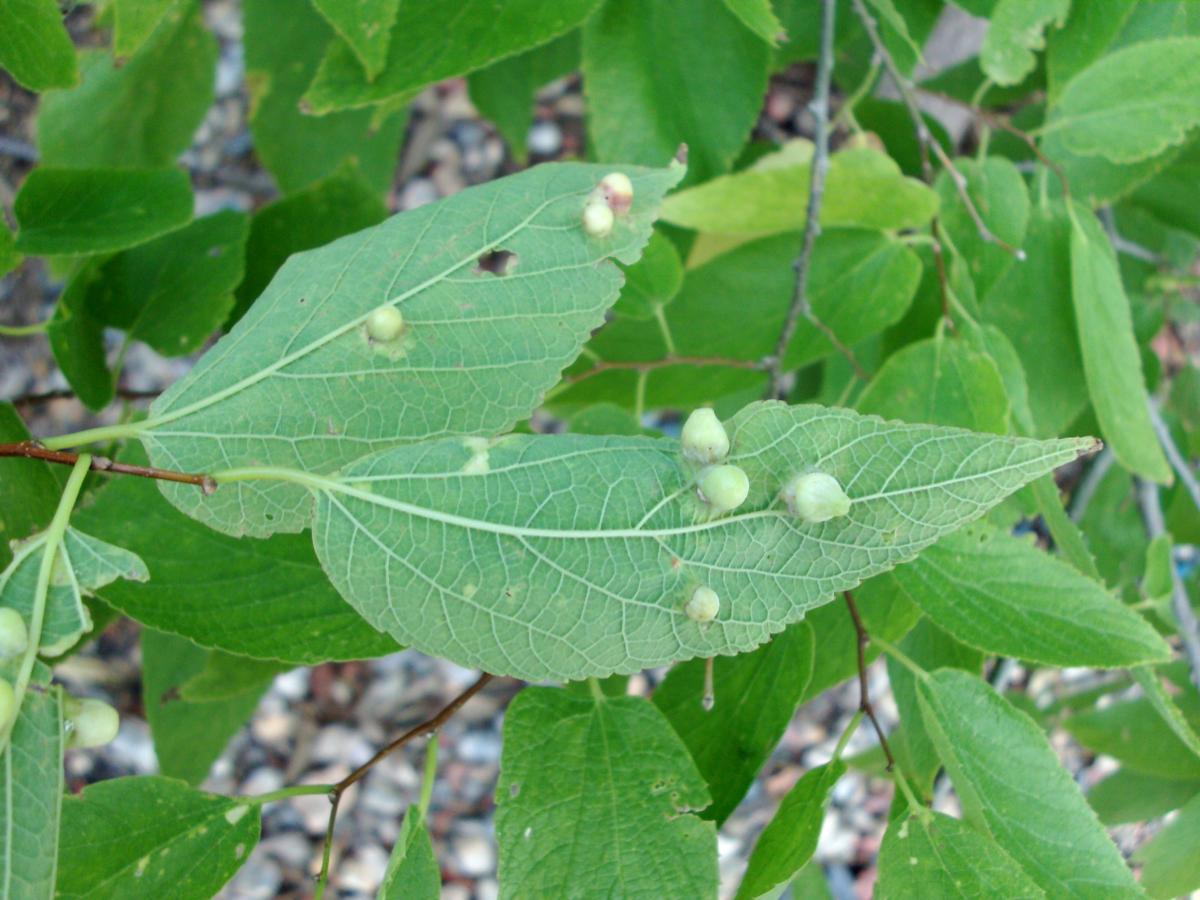
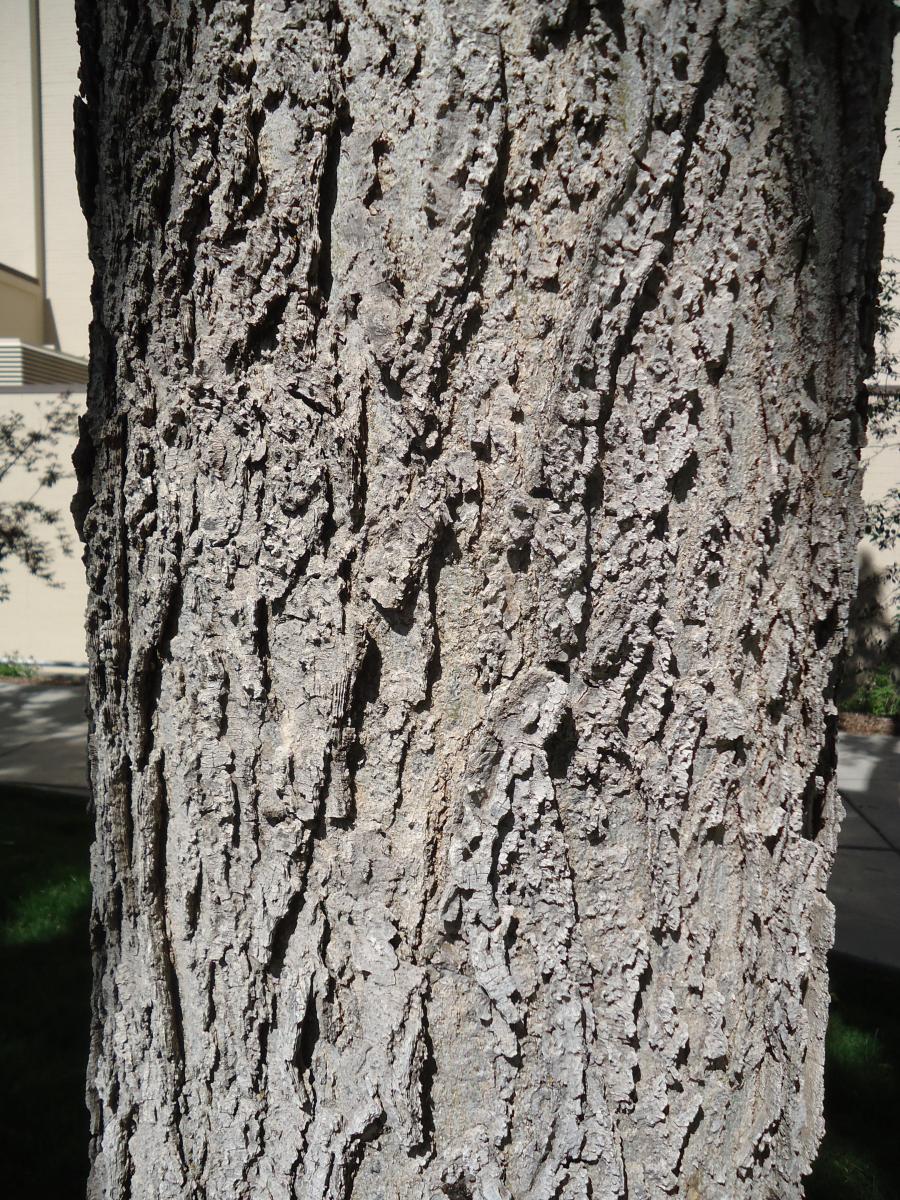
Celtis occidentalis
Leaves: Deciduous. Leaves are asymmetrical at the base and 2 to 5 inches long. Leaf edges are serrated. Bright, medium green color. Yellow to yellow-green fall color.
Bark/Twigs: Grayish, warty, ridged bark. Aged bark has ridges and bumps like dried mud globs.
Flowers/Fruit: Inconspicuous flowers bloom in spring with emerging leaves. Produces black-purple pea-sized berries that ripen in the fall. Usually not a problem since it dries on the tree and is eaten by birds.
Mature size and shape: Large. 40 to 60 feet high nearly equal in spread. Slightly pyramidal when younger. Becomes more rounded or oval with arching branches.
General information/special features: Plant in full sun. Moist, well-drained soil is best. Does well in drier soils and poor conditions such as rocky soils, urban areas, or heavy soils. Adapted to moderate drought, heat, wind, and alkaline soil.
Landscape use and maintenance: Large shade tree. Medium to fast growing rate. High maintenance. Nipple gall is a common problem which causes green bumps and disfigures the leaves. Easily transplanted.
USDA Hardiness Zone: 3 to 9
Family/Origin: Ulmaceae – Elm. Native from the Great Plains east through most of the eastern U.S., excluding the extreme southeast.
Campus Use: Somewhat common. The tree west of the William Stewart Building (Bld 6) is on the Utah Big Tree Registry.
